Thank you
, , , , , and many others for tuning into my live video with ! Join me for my next live video in the app.Welcome to the Canyon: A Journey into Creative Healing
We gathered in a live sacred space—an energetic field designed to hold the unfolding process of creative healing. Not a finished product, not a fixed destination, but a living journey. As I shared early on, “This is not a done thing. This is an ongoing beautiful journey.” (00:11)
Christine Castigliano, through her Substack Mostly Brave, hosted this conversation—a gathering place for creative souls growing their self-trust. It isn’t about being fearless. It’s about being witnessed when we show up scared, tangled in perfectionism, and still reach toward our full, wild-hearted selves. That shared intention—acknowledging fear while choosing authenticity—was present from the start.
“We are not 100% brave because we got acknowledged when we're scared, when we're having, you know, perfectionism, all of our issues, and grow the trust to show up in our full authentic wild heart self.” (00:36) —Christine
A Canyon Carved by Trauma & The Moment of Meta-Awareness
I introduced myself from Germany. “I'm looking forward to leave Germany because I'm very unhappy here.” (03:37) I said it plainly, but what lay beneath that statement was anything but simple. My unhappiness wasn’t circumstantial. It came from living in a country that never felt like home, shaped by deep, unrelenting layers of trauma. By the time of this conversation, I had uncovered 28 trauma tops. When I began, I only knew of five. I’ve never had the sense of standing tall in the world. I was always somewhere lower—emotionally, energetically, spatially. Not on a peak or even a plain. I was down in something, something enclosed.
"I was always in kind of a valley or canyon or some structure.
I was not up. I was always down in something." (05:21)
So I spent years trying to escape it. Trying to fix it. Trying to find light. I thought healing meant climbing. I longed for that altitude, but I couldn’t get there.
The shift didn’t come from rising above. It came from seeing clearly—perhaps too clearly. I became aware of myself, in motion, but with no access to the controls. I wasn’t in the driver’s seat. I wasn’t choosing my behavior. I was just watching. "I could see it. But I couldn’t do anything about it." (07:06).
It wasn’t that I lacked insight. I could feel everything, name every emotion, recognize every need. But the response was already underway. The program had kicked in before awareness arrived. “When the consciousness sort of set in, the program was already running, and I couldn’t stop it.” (09:31)
To stand inside myself with all that clarity and still be unable to act differently—that was the most painful thing. The moment I saw my body hijacked by something far older than the present.
“Sometimes 50, 55 years ago. Not just 20 or 10 years ago.
And I was reacting still to what happened back then.” (10:12)
That’s when I knew: this wasn’t about now. My body wasn’t reacting to this moment. It was running the script of a wound so old it predated most of my memories. And that wound had written an entire corrupted self—an identity assembled not by choice but by survival.
That self knew how to please. How to function. How to perform, and to push through. But it didn’t know me. It didn’t know how I feel when I’m free, or how I move when I’m not being watched. It was designed to survive in environments that denied my truth. And I watched it—this self, not me—take over my body.
I had called it the corrupted self long before I understood its full architecture.
A patchwork version of me, built on compliance, fear, and adaptation. Highly functional. Deeply disconnected. Structured around everything I needed to be in order to avoid rejection, abandonment, or punishment.
And for decades, it worked. I showed up. I achieved. I kept going. I looked strong. But I wasn’t in the car. I was watching it drive from the back seat, powerless to intervene. The breakthrough came not from judging it, but from seeing it for what it was—a survival code. Not evil. Not bad. Just no longer needed.
That insight didn’t change everything overnight.
And it was the first true foothold. The first time I realized that what was happening to me wasn’t some mysterious failure of willpower or character. It was a program.
A script. A pattern. And patterns can be unlearned—once they’re seen.
That was the moment I began.
In the actual recording Christine does a short recapitulation of what we discussed in part 1 of this talk, which was mostly about my past and a summary of some of my life changing experiences.
(00:13:08) - (00:15:10)
Trauma Mapping: The Side Canyons
When I began talking to myself and my therapists about the canyon model, I hadn’t expected it to unfold with such clarity. But it did—one image at a time. Each element carried weight. And the more I named them, the more I realized: this canyon wasn’t just metaphor. It was memory. A map etched into my body, my psyche, my way of being.
I started by recognizing that my main canyon—the one I’ve always found myself wandering—was shaped and reshaped by trauma. Not one moment. Dozens. Each left its own distinct trace. And some didn’t just shape the canyon walls—they carved into them, branching off as side canyons.
Each side canyon held a story.
Slot Canyons — the sharp, narrow wounds
Some were tight and dry, where light barely entered. Slot canyons. They marked singular, acute traumas—an accident, a moment of violence, a rupture with no before or after. These cuts didn’t connect to anything else. They stood alone, smooth-walled and silent. Places I’ve felt but can’t climb into. Places I don’t visit often, but I know exactly where they are.
Rift Canyons — the structural breaks
Others came with force—explosions that fractured the entire system. Rift canyons. These weren't just wounds. They tore through everything: sudden death, family implosions, destruction that shook the ground beneath me. I still feel the aftershocks. These canyons didn’t scar—they split. And nothing around them stayed the same.
Braided Canyons — the exhausting, endless paths
Some canyons didn’t start with a single event. They wound in every direction, no beginning, no end. These were the complex traumas. The slow, tangled ones. Emotional abuse layered with neglect. Environments where nothing made sense and everything required adjustment. They were confusing, and more than that—exhausting. Always turning. Never done.
Stable Canyons — the slow, quiet shaping
Not all side canyons came from devastation. Some were shaped over time by pressure—cultural, systemic, social. They didn’t crack or slice. They wore me down, slowly, like water carving rock. These canyons formed through repetition, through the demand to fit in, to perform, to stay functional. I adapted. I survived. But not without cost. These places look smooth and stable, but freedom doesn’t echo there.
Inheritance Canyons — the humming legacy
And then there’s the deepest layer—the canyons I didn’t dig myself. Intergenerational trauma. Patterns etched long before I arrived. These don’t scream. They hum. They move in my posture, my fears, my voice. I didn’t choose them. They came with the lineage. Seeing them—without shame, without blame—was its own act of healing.
Each side canyon impacts the main one. Some divert the flow. Some block it. Some lead to new paths I didn’t know I needed.
And not all of them are accessible.
Some have wide entrances—I’ve done the work there. I know their trails. Others remain hidden, layered behind fear or forgetting. And some are still sealed. Closed by shame or silence or the simple truth: I’m not ready.
And that’s okay. I’ve stopped forcing.
I meet each canyon when it reveals itself.

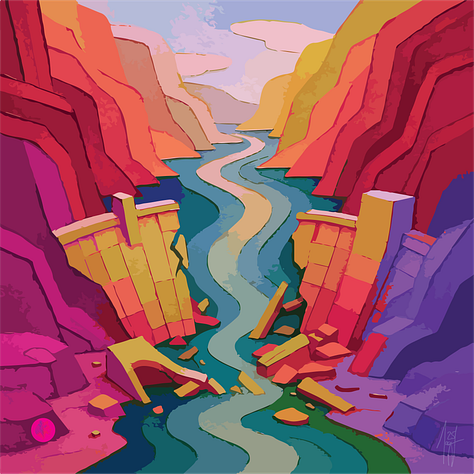

The Dam and the Reservoir: A Journey Through Internalized Oppression
There came a point in my journey when I saw it clearly for the first time—the Dam. (00:18:26)
Not metaphorically, but as a real structure in my inner landscape. It appeared in the canyon, not as something that belonged to the terrain, but as something distinctly foreign. Artificial. Constructed. And when I saw it, I said it out loud.
“The dam is… not something that is nature-made. It is man-made.” (00:34:54)
I hadn’t built it from curiosity or creativity. It wasn’t a product of my essence. It was put into me. Built from the outside in. Layered over time, silently and methodically, with every message I received about who I had to be in order to be acceptable. What I had to suppress in order to be safe.
At first, I only sensed its shape. Its function. It was there to regulate. To block. To keep something in.
But then I realized what it was really built for. It wasn’t designed to serve my life. It didn’t protect me the way a boundary would. It was something entirely different.
“It’s there to produce an outcome which is not for myself.
It is for some external person or force.” (00:37:13)
That sentence didn’t come from theory. It came from my body. From recognition. The dam didn’t exist to support my growth, or to channel my energy for my own nourishment. It existed to make me productive. Presentable. Palatable. Compliant.
It had been formed by all the external expectations that had governed my life for decades.
Not just spoken rules. Also the unspoken ones. The ones I learned through rejection. Through silence. Through punishment. It wasn’t one person who laid the bricks. It was everyone who reinforced the message: that who I was in essence wasn’t quite right, wasn’t quite enough.
So I adapted. I bent. I built.
And this Dam—this internalized structure—grew strong. I didn’t even question it, because it was there so early. It felt like it had always been part of me.
But when I stood in front of it this time, really saw it, I knew: it wasn’t mine. Not in origin. Not in purpose.
It had been assembled from:
Parental conditioning
Silent contracts within my family
What teachers rewarded and punished
What culture considered appropriate
Gender roles, religious morality
What Germany had taught me as a child, implicitly and explicitly
Trauma inherited across generations
And from all those “shoulds” that had become muscle memory—so deeply embedded I didn’t know where they ended and I began.
The Dam wasn’t made of my fear. It was made of everything fear had built inside me. Everything that told me to keep things inside. To silence the true flow. And behind it? There was no clear water. No fresh reservoir of potential. What waited behind that dam was stagnant, dead weight.
Descent into the Reservoir
“It was dead… oily surface… no nutrients in it.” (48:24)
That’s what I said because that’s what I saw.
Not a thriving lake of untapped dreams—but a poisoned holding tank, full of everything I’d suppressed just to stay functional. Grief I had no space for. Rage I was never allowed to feel. Joy I learned to mistrust. Desires I buried so deep I couldn’t recognize them anymore.
There was no light reaching that water. No life moving through it. It didn’t just hold things back—it dissolved them. It swallowed memory and instinct. And I could feel it, not just as a metaphor, but in my body.
I didn’t know yet what to do with it. But I knew I had to go in. Not in theory. Not to fix or drain or understand it. But to be in it. To feel what I had spent a lifetime protecting myself from.
That’s when the work began. The real kind. The quiet kind.
I didn’t blast the dam open. I didn’t destroy the walls. That would have flooded me. I had to descend, consciously. And when I did, I didn’t find abstract fear. I found a little one waiting. Still whole. Still alive inside the muck.
Her name was Judilie.
In the first encounter she was three years old. In kindergarten. Frozen in the very first trauma I ever experienced, being gender-non-conform. For the girls I wasn’t a girl. For the boys, I still remained a girl. I stood there, in between all chairs, that had already been taken, with no chair left for myself. And I was mobbed and bullied because of it.
“I started with integrating the first trauma... the trauma at three at the kindergarten.” (00:56:07)
And I went back there. Again and again. Not to relive it. But to meet it.
I didn’t rescue her. I listened. I stayed. And then I came back again. Eighteen times, to be exact. Not because I planned it that way, but because that’s how many returns it took to integrate what had been frozen there.
This wasn’t psychological processing. It was full-bodied.
What Changed After Integration
And something miraculous happened—not because I tried to force a change, but because I stayed present long enough for the system to remember it didn’t need to react anymore. “With every trauma I integrated that way, the automatism... was broken.” (37:29). That word—automatism—was crucial.
I didn’t stop having reactions because I became better at controlling them. I stopped having them because my body no longer needed them. The neural pathways simply didn’t fire the same way anymore.
“I was no longer reacting. The body is in fact healed because otherwise I would experience these automatisms again and again.” (01:00:55)
It wasn’t a performance. It wasn’t a new spiritual practice. It was integration—a gradual dissolution of the dam’s power, not by dismantling it, but by entering the place it was meant to protect me from.
And here’s what mattered: I didn’t suppress the response. It didn’t arrive. The circuitry had changed. The trauma had released itself, not through catharsis, but through presence.
That was the first true proof that I wasn’t just collecting insights. I was re-embodying.
And that gave me a new kind of confidence. Not the surface kind. The deep-rooted, cellular kind.
So when I talked about becoming the canyon—it wasn’t a metaphor anymore. It was the truth of how I lived inside my own body.
I looked up at the canyon walls, expecting to see the same layered stories, the same familiar terrain I’d spent years mapping. But it wasn’t just that I knew them. I realized something I had never been able to say before:
“I was looking at these walls and suddenly I had an epiphany...
I am this Canyon.” (00:16:32)
Not the explorer. Not the cartographer. Not the person navigating from outside. I had become the landscape itself.
I no longer walked the canyon like a visitor. I was the canyon. Not only the walls and passages, but the echo, the depth, the space that held it all.
From that moment on, I stopped thinking of this as just my story.
It became a framework. Because I realized that what I had built—the Canyon Model—wasn’t only personal.
Not for coaching. Not for teaching. For witnessing.
For understanding how deeply systemic forces shape our inner terrain. How trauma and patriarchy and familial expectations aren’t just emotional events. They become architecture.
It held within it a way of seeing how external forces become internal terrain. How culture and patriarchy and religious conditioning don’t just shape opinion. They shape geology. “I have structures with which I can implement how these outside influences affect my canyon.” (01:07:50)
And once you begin to see that, you can stop blaming your struggle on willpower. You can start understanding that you didn’t fail at healing. You just hadn’t seen the structures inside you yet.
So the model gave me language. But the experience gave me embodiment.
And it’s from this place that the Canyon Model became more than just a personal map.
Closing: A Living Canyon
This isn’t the end of the story. It’s a foothold. A resting ledge. A place to breathe before we continue.
The Canyon Model isn’t something I built and now present as finished. It’s still forming—layer by layer, path by path. Each trauma I’ve named, each pattern I’ve unlearned, each structure I’ve uncovered—it all reshapes the terrain. And every time I return, I see something new. That’s the nature of canyons. They deepen with time.
What began as survival turned into mapping. What began as exile turned into return. And what began as metaphor revealed itself to be memory, body, structure, and truth. The canyon is not outside me. It is me. It holds not just my pain but also my possibility.
And now, it holds yours, too.
We’ll be continuing this conversation on
Friday, April 11—early evening EST / late afternoon PST
where I’ll share more about what it means to become the canyon, and why that shift changes everything. Christine and I will co-host this next part, and we’d love to hear from you.
What questions do you have? What parts of this living terrain do you want to explore? Because this isn’t a map I hand to others—it’s an invitation to trace your own.
Tell us your questions in the comments.
Thank you for walking this stretch with me.
Until next time,
— Written to accompany the video conversation between Jay and Christine, April 2025 ❤️ If you find this piece meaningful, consider clicking the heart at the top or bottom of the post. It helps others discover this newsletter and brightens my day.
Send Your Question by Direct Message here:
Support My Work: Subscribe and Contribute
If this reading resonates with you, great! And if not, no worries. Take whatever may be helpful and leave the rest.
If my writing, art, and recipes resonate with you, I would be incredibly grateful if you would consider supporting my work with a paid subscription to Wild Lion*esses Pride.
If a monthly or annual subscription isn’t feasible for you right now, you can also show your support with a one-time tip via my Tip Jar here.
Thank you for your kindness and generosity—it truly makes a difference. Together, we’re creating a space of reflection, creativity, and connection, and I’m so grateful you’re part of this journey







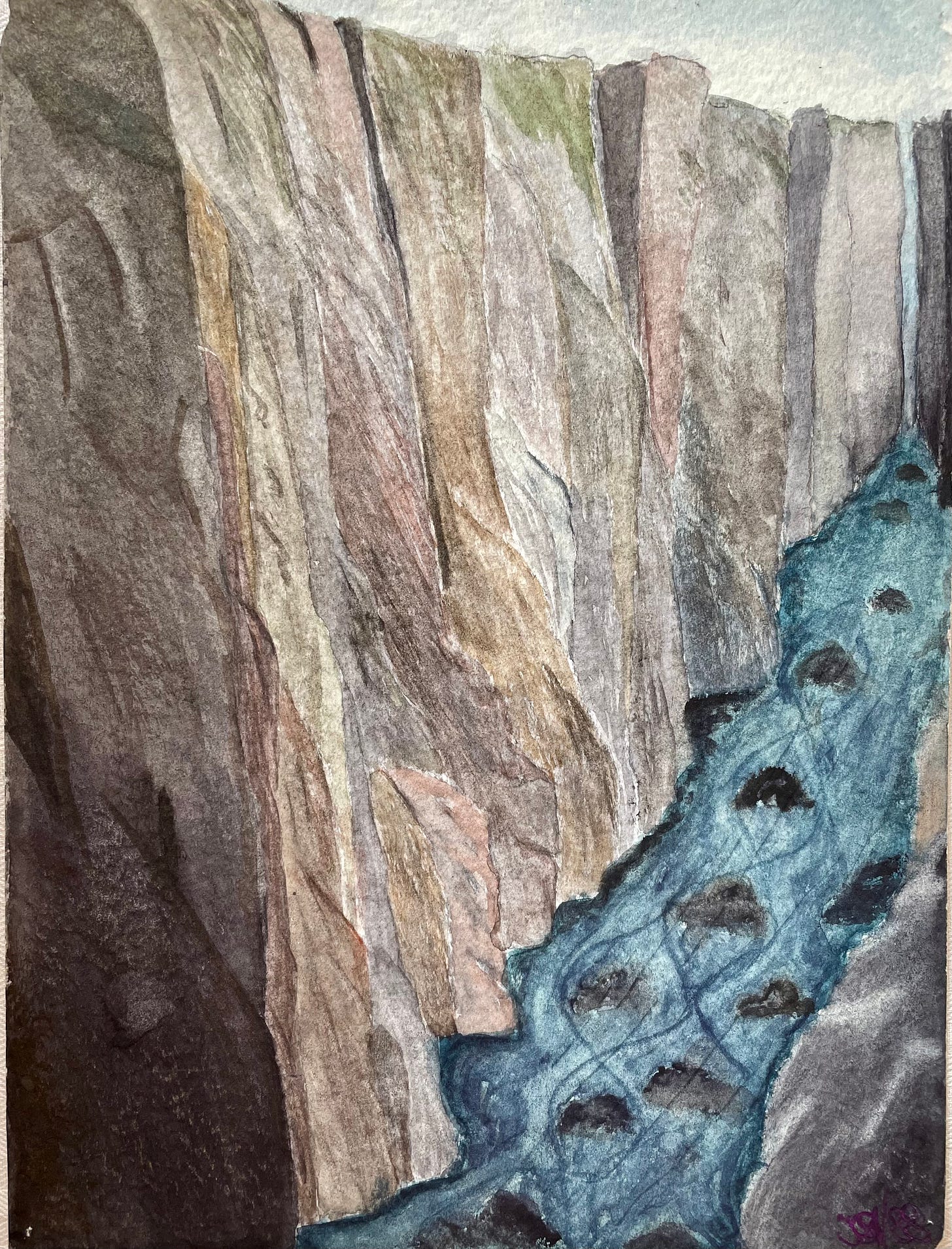







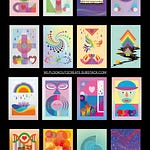

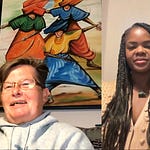

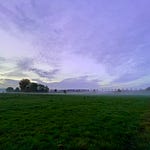
Share this post